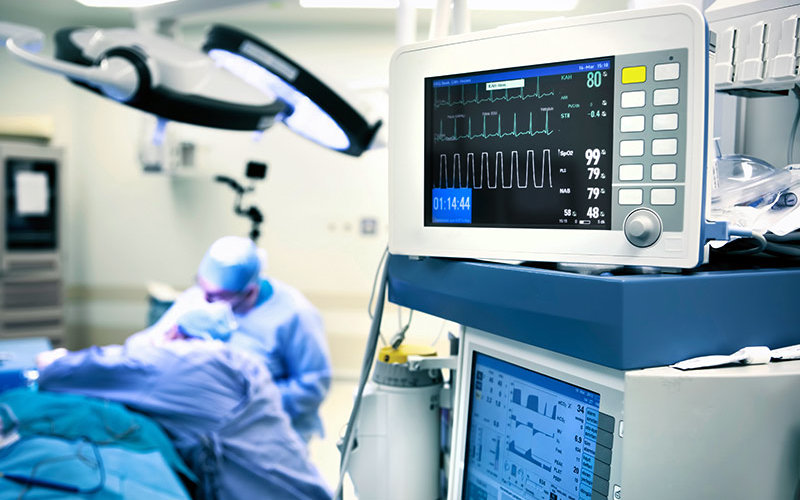
Students and faculty in Cal State Fullerton’s top-ranked nurse-anesthesia program recently completed a five-day trial testing the effectiveness and durability of using anesthesia gas machines as long-term ventilators for COVID-19 patients.
Typically used for short-term anesthesia care delivery, the anesthesia gas machines proved an effective solution for health care facilities facing shortages of traditional ventilators, said Michael Boytim, assistant director of the nurse anesthesia program and faculty member.
The nurse anesthesia program — No. 4 in the nation, according to U.S. News & World Report — is a partnership between CSUF and Kaiser Permanente’s School of Anesthesia. The program prepares doctoral-level graduates to conduct clinical practice and cutting-edge research in the field of anesthesia, as well as serve in leadership roles in clinical settings and national professional organizations.
“With a current shortage of mechanical ventilators, we could convert our anesthesia machines into ventilators should they be needed for coronavirus patients,” said Boytim, noting that continuation of the testing will be determined based on need.
Several students, including David Sierra and Jennifer Ngo, volunteered to take eight-hour shifts during the trial, monitoring such factors as flow rates, minute ventilation, tidal volume, respiratory rates, peak pressures and more. Some students, alongside faculty members Jeremy Heiner and Ed Waters, also assisted with the development of teaching materials for nurses to use the anesthesia gas machines as ventilators.
“Ventilators that are built into anesthesia machines are not used around the clock like intensive care unit ventilators are,” explained Sierra. “Typically, surgical patients are on an anesthesia machine ventilator during the surgery and then they are either extubated or switched to a non-anesthesia machine ventilator.
“We wanted to find out if the anesthesia machine ventilator could be used to support a non-surgical ICU patient for an extended period of time,” he continued. “We set up the ventilator to run 24 hours a day under conditions that would simulate an ICU patient’s disease process.”
“Running the device continuously for an extended period of time was fascinating to see since it showed that the machine is more versatile than it looks,” added Ngo. “The use of anesthesia gas machines as an alternative to ventilators is a game-changer — and something that I am proud to be part of.”
With an interest in global health, Ngo aspires to support anesthesia providers in settings with fewer resources and ultimately increase the accessibility of surgeries in those regions.
Both Sierra and Ngo anticipate graduating in 2021. They say the pandemic, although alarming, reaffirms their decision to become health care providers.
“It’s both scary and fulfilling,” said Sierra. “I’m reminded of the reason I entered nursing in the first place — and that’s to care for people when they are most in need.”
How to Support CSUF’s School of Nursing
As the COVID-19 pandemic limits clinical training experiences, CSUF’s nursing simulation lab is more critical than ever in providing hands-on training for students. You can help by making a donation to equip the lab with the tools necessary to train future generations of frontline health care workers.
Thanks to the generosity of donors, the School of Nursing raised $7,975 of its $10,000 goal during #TitansGive, CSUF’s first-ever day of giving. The funds will be used to purchase such equipment as a respiratory ventilator so students can practice inline suctioning, vent settings and FiO2 skills. Though ventilators currently are in high demand, the School of Nursing plans to purchase one following the COVID-19 crisis.
Contact: Lynn Juliano, ljuliano@fullerton.edu